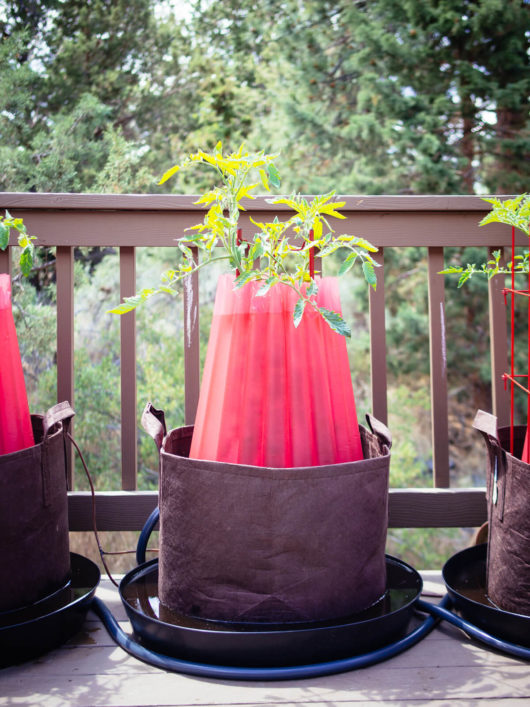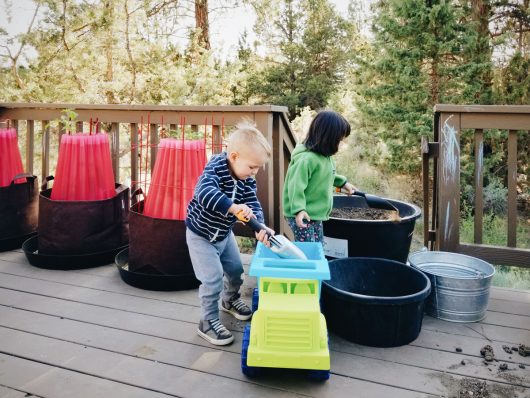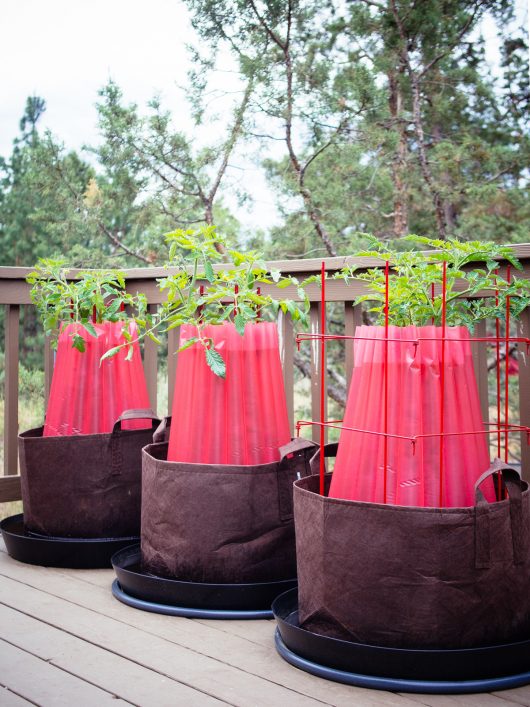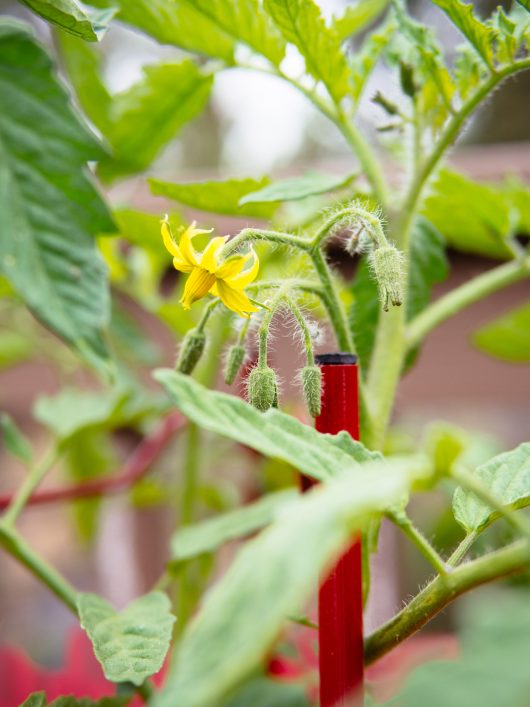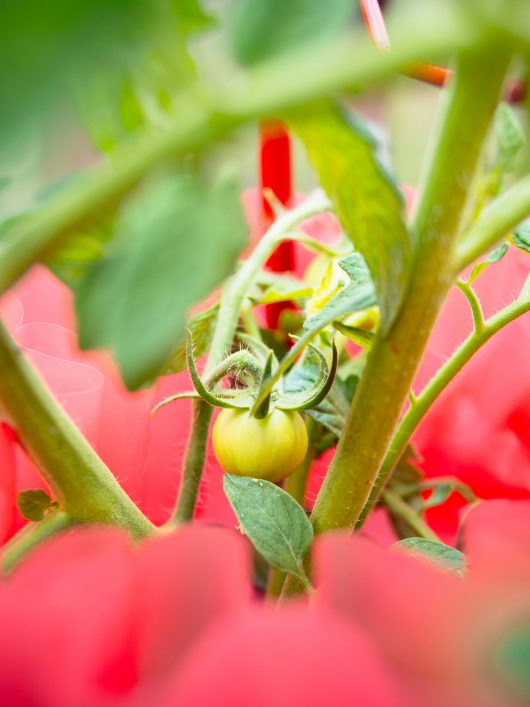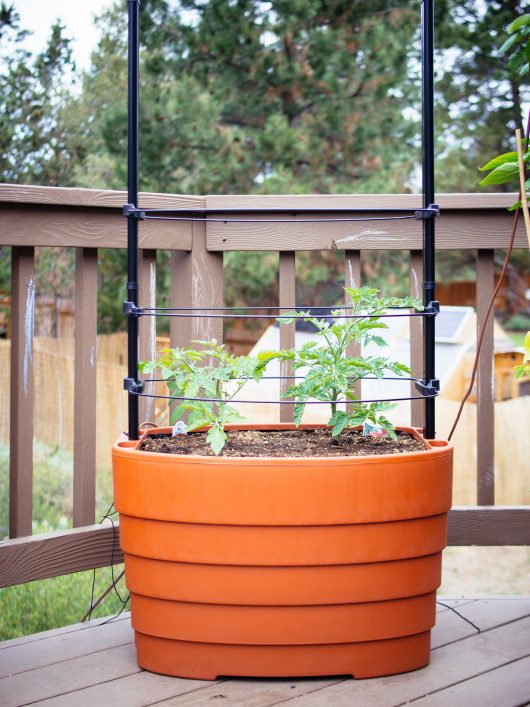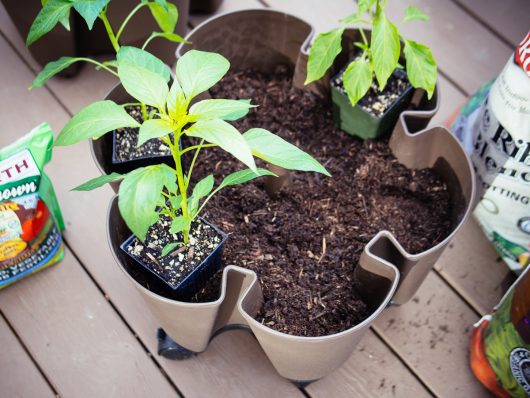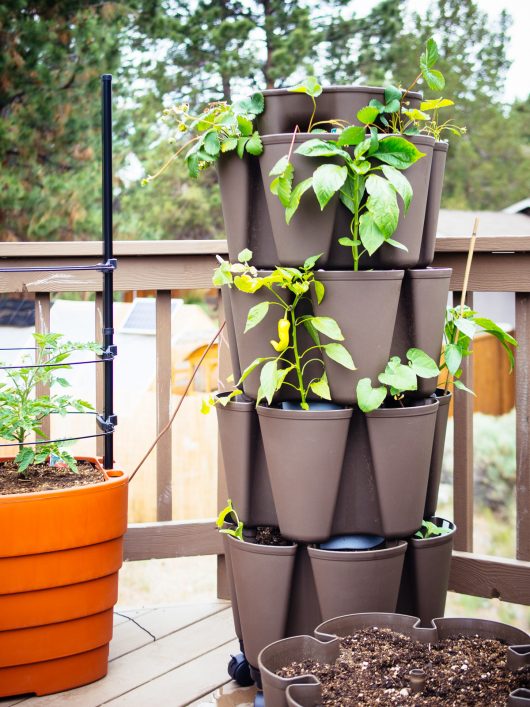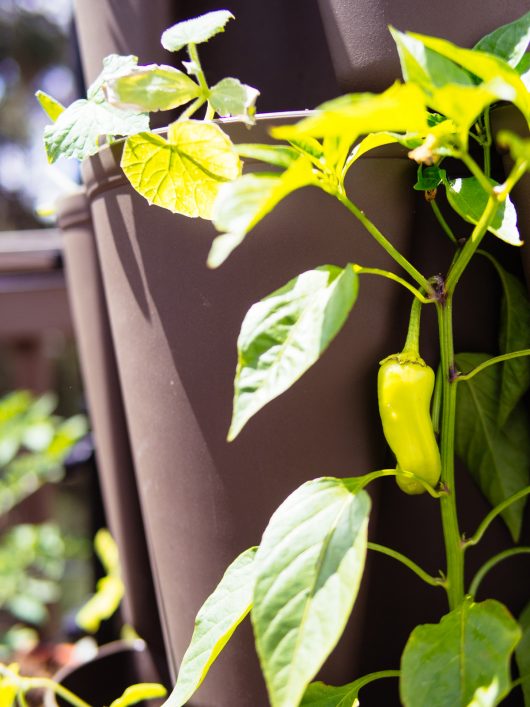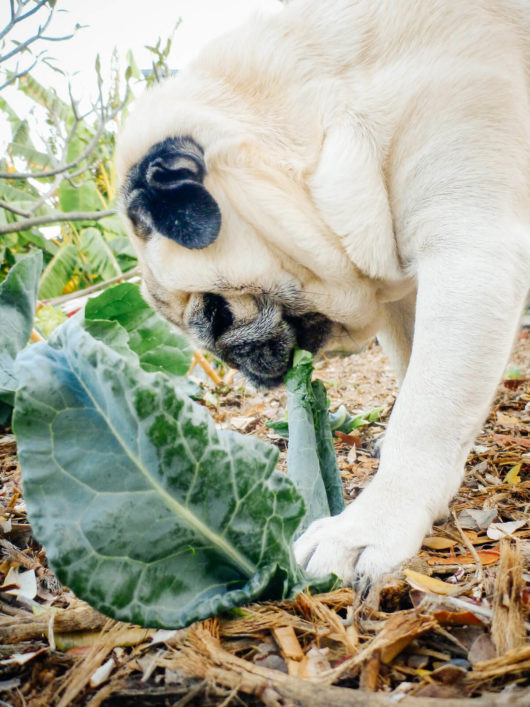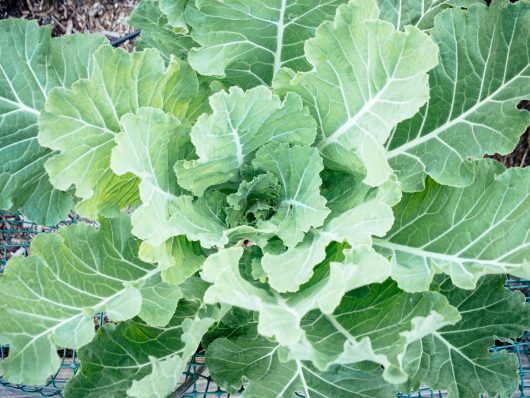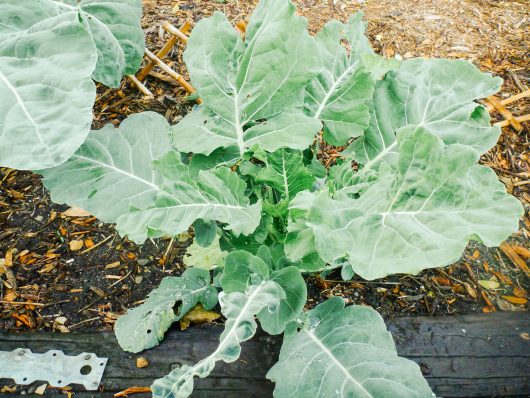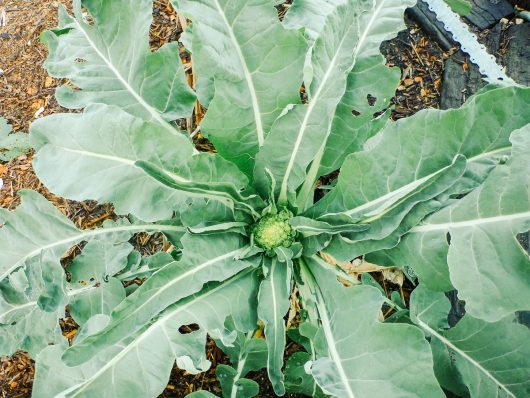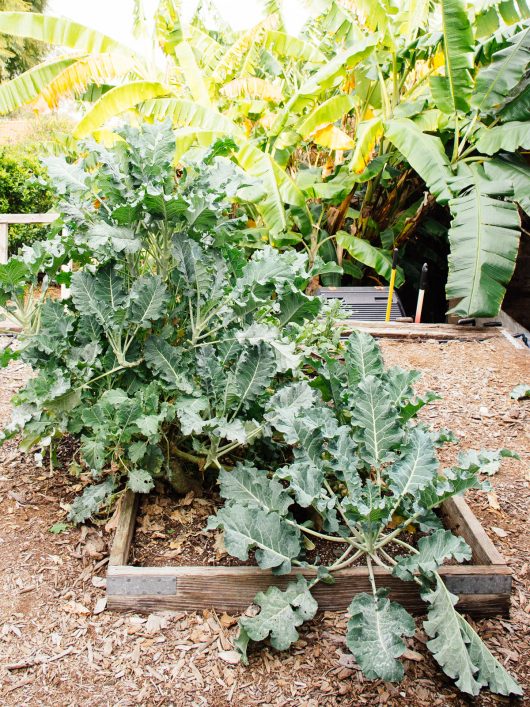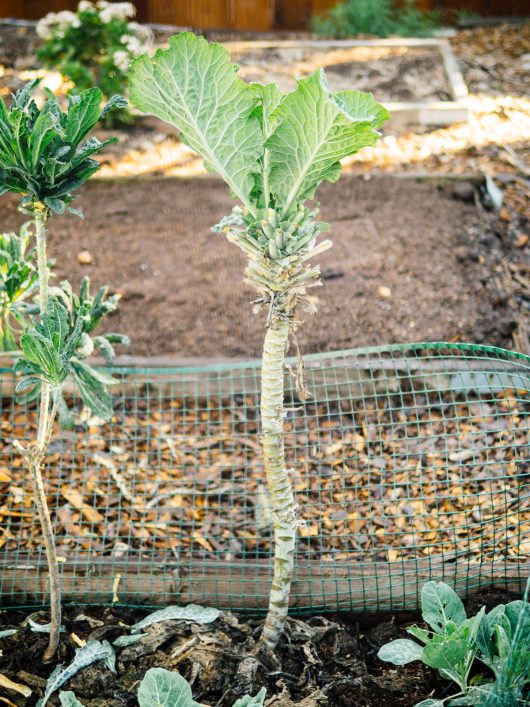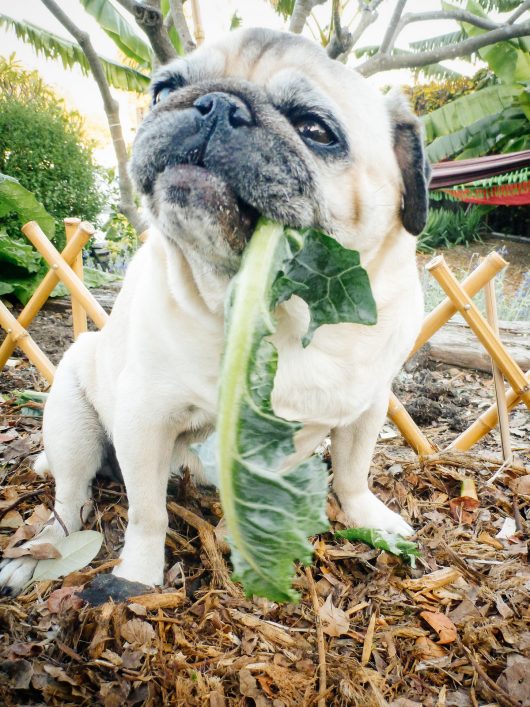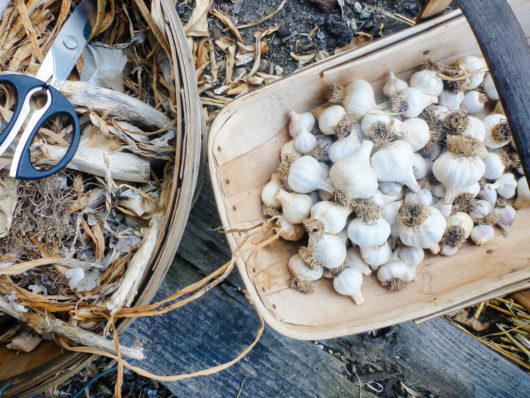
You waited seven, maybe nine months, for all that homegrown garlic to finish growing. Now that you've dug it all up, you want to savor it for as long as possible until the next garlic crop is ready.
This is when curing becomes your friend.
Curing is the process of letting your garlic dry down in preparation for long-term storage. Curing and storing garlic allows you to enjoy the flavor of your summer harvest well into winter… and one of my favorite things about garlic is that it still stays fresh long after it's been plucked from the ground. No pickling, no canning. Just a simple head of garlic that looks and tastes the same as the day you pulled it.
Garlic that you want to eat right away can be used right away, straight from the garden.
Garlic that you want to cure should be moved to a dry, shady, airy place once they're harvested — this can be under a tree, on a covered porch, or in a well-ventilated garage.
Lay the bulbs out one by one to provide good air circulation. Garlic is susceptible to sunburn (it can literally cook under the sun, which deteriorates the flavor), so you want to minimize the amount of direct sunlight it gets during the curing process.
No need to clean off all that dirt for now — you'll tidy them up when you trim them. Don't wash your garlic either. After all, the point is to dry them out!
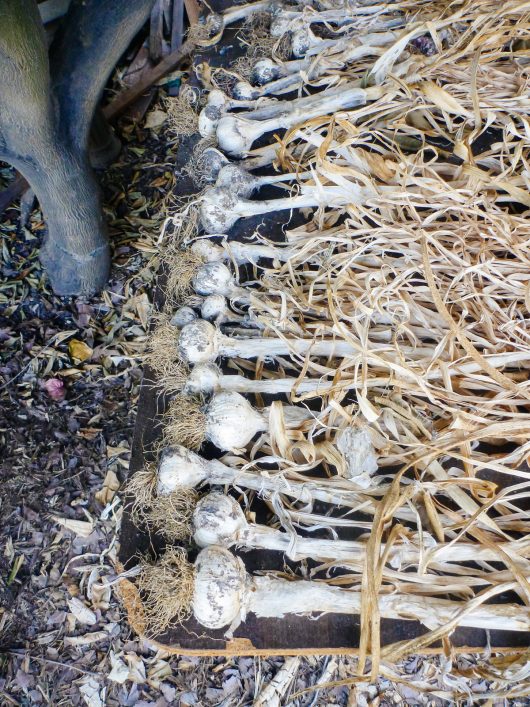
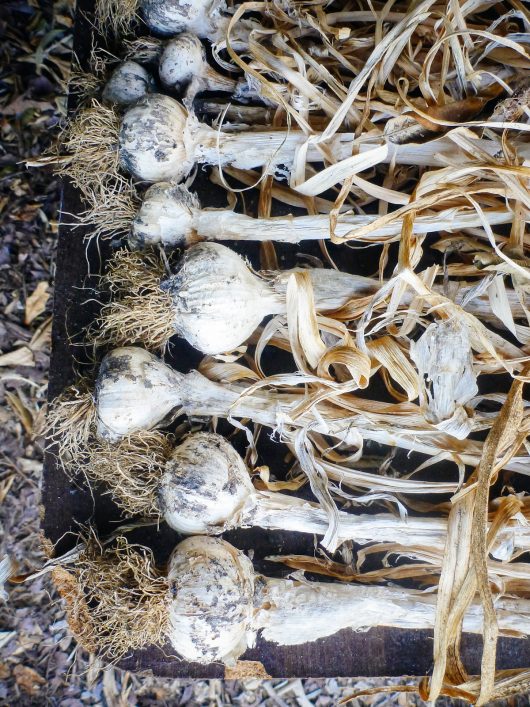
You can also gather the garlic into bunches, tie them up, and hang them from their stems. If you're feeling crafty, you can even braid the stems, just like the beautiful ones you see in Italian restaurants.
Braiding only works with nimble softneck garlics, and I find it helps to remove the scraggly bottom leaves first. The garlic is braided while some of the leaves are still green and pliable, and hung to dry in a shady spot.

Do not remove the leaves while the garlic is curing. The bulb continues to draw energy from the leaves and roots until all that moisture evaporates. Keeping the leaves intact also helps to prevent fungi or other lurking garden contaminants from spoiling the garlic before it's fully cured.
After a month (or possibly up to two months, if the weather has been rainy or humid), the roots should look shriveled and feel stiff like a bottle brush, and the leaves should be completely brown and dried.
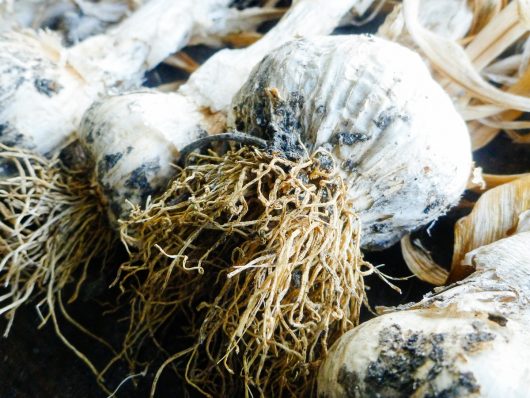
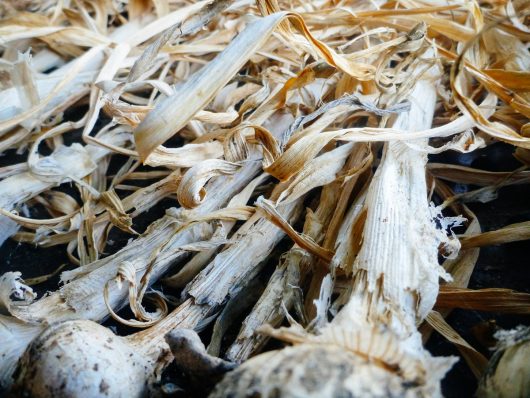
To clean up the garlic for storage, trim the roots and leaves (with a pair of scissors or pruners) to 1/4 inch or 1/2 inch. More dirt will dislodge and a couple extra layers of bulb wrappers may flake off, giving you a nice and neatly packaged bulb. Remember not to remove too many wrappers in case you expose the cloves.
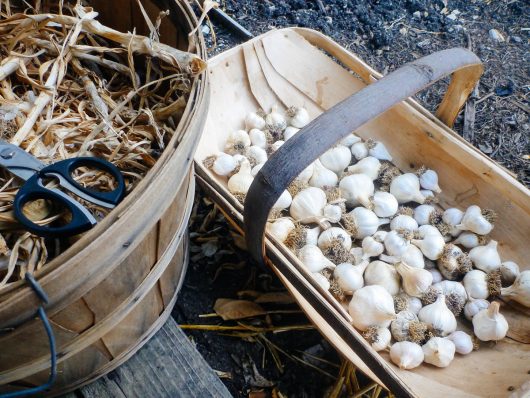
Garden Scissors | Wooden Basket | Garden Trug
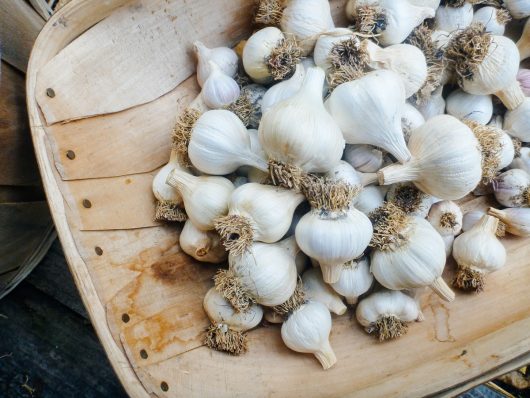
(If you braided your garlic, you saved yourself an extra step and can simply snip a bulb off the braid when you need it.)
Set aside your most beautiful heads of garlic with the biggest cloves to use as seed garlic the following season.
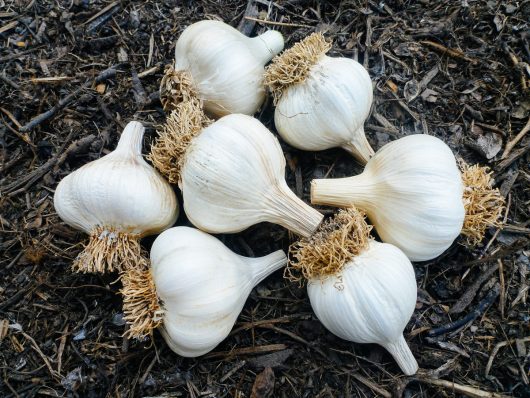
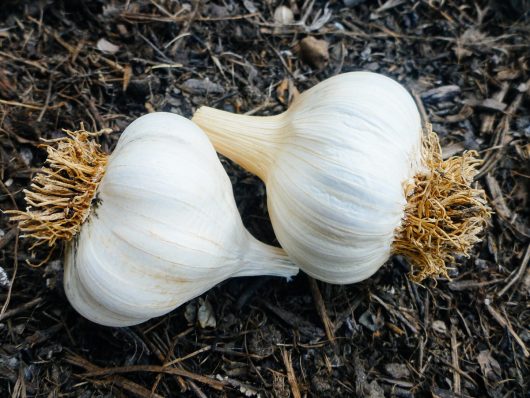
Stash it all in mesh bags, woven baskets, old terracotta pots, brown paper bags, or even cardboard beer/soda cases — as long as the container is breathable and the environment stays dry.
I have even heard of people storing garlic in old pantyhose by hanging it from the ceiling, putting a knot between each garlic head, and scissoring off a knot when needed — but really, who has pantyhose laying around these days?!
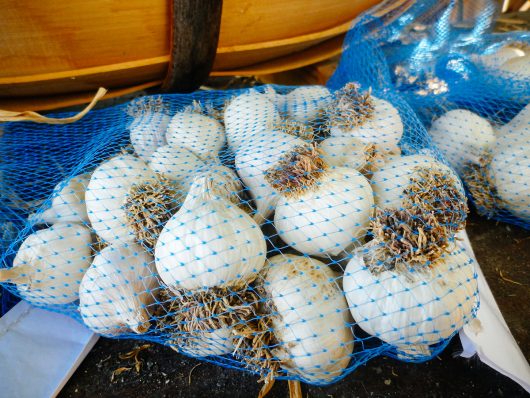
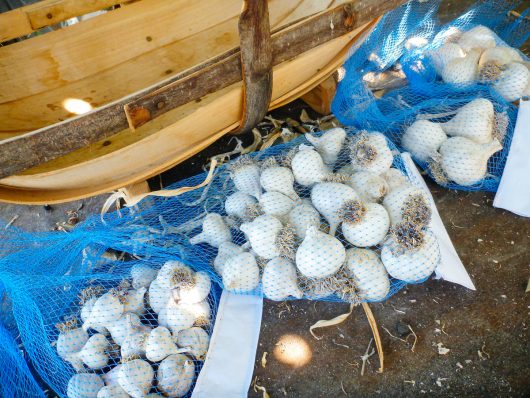
Garden Trug | Mesh Nylon Bags
Once properly cured, garlic can store for several months. In general, Silverskins and Creoles are the longest-storing garlic (sometimes keeping up to a full year), followed by Porcelains, Artichokes, Purple Stripes, Rocamboles, and lastly, Asiatics and Turbans, which have the shortest shelf life (average of five months under the most optimal conditions).
Temperature, humidity and ventilation all play key roles in determining how well your garlic will store. A "cool, dark place" is the usual recommendation, and it doesn't get any simpler than a spare cupboard or closet shelf at room temperature.
If you want to get technical, the ideal storage condition is between 55°F and 65°F, around 60 percent humidity, with good air circulation. Garlic tends to sprout at colder temps (thus, no refrigerators!) and dry out in warmer temps.
Lower humidity may cause dehydration (especially in Rocamboles, which are more finicky than other varieties), while higher humidity may bring in fungus and mold. Light is not a factor in storage, as long as you keep your garlic away from direct sun.
All that said, there is no exact science to storing garlic and I like to keep it simple. I save and reuse nylon mesh bags (the kind that potatoes and onions come in), sort my garlic into them, and hang my harvest in a storage room.
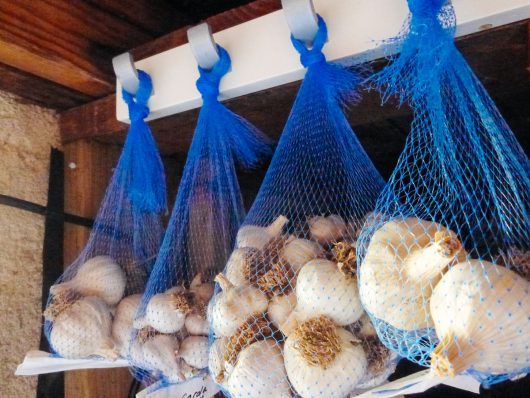
If you're lucky, you'll be breaking out fresh cloves in winter and perhaps even through the following spring!
Gardening Sources
Cornucopia Wooden Half Bushel Baskets | Esschert Design Sussex Trugs | Okatsune Garden Scissors | Glotoch Express Reusable Mesh Nylon Produce Bags
This post updated from an article that originally appeared on July 14, 2011.
The post A Guide to Curing and Storing Garlic appeared first on Garden Betty.
Check Out My Books!
 | The New Camp Cookbook offers over 100 modern recipes for campers, road trippers, and adventurers, plus practical tips for building a cooking fire, setting up a camp kitchen, and stocking an outdoor pantry. As seen in Time Magazine, Outside Magazine, and Food & Wine! | |
 | The CSA Cookbook features over 100 no-waste recipes for using up the produce in your Community Supported Agriculture box, farmers' market basket, or backyard bounty. Learn how to cook all the unconventional parts of vegetables you thought you couldn't eat, like carrot greens and squash leaves! |
from Garden Betty https://ift.tt/2tv8R1n
 Turn on your JavaScript to view content
Turn on your JavaScript to view content